Review: Roli Songmaker Kit is a futuristic composer's dream
The Roli Songmaker Kit includes everything you need to create beats, music, and more with a pair of well-designed iOS apps and a trio of clever modular music-making blocks.
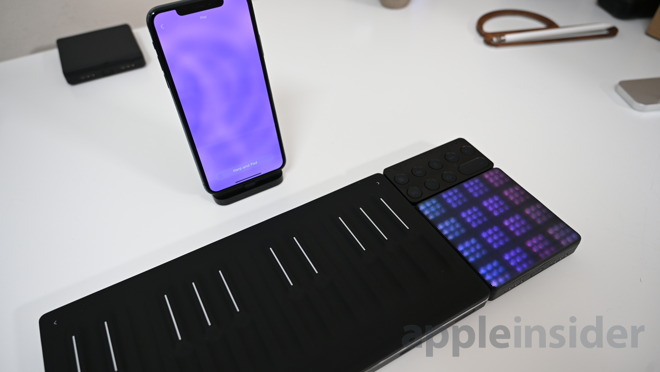
The Roli Songmaker Kit
You wouldn't be wrong to say that the Roli devices look futuristic. With a silicone surface, colorful LEDs, and app-integration, the whole package is about as futuristic as music gear can get.
There are several individual components in the Roli Blocks lineup, all of which can be picked up individually, or in various kits. In this case, we're testing the Songmaker Kit which includes the Lightpad Block M, Seaboard Block, and the Loop Block. You save a bit buy getting them together in the kit, plus it has a case that keeps them all together.
Let's first look at each component, then how they all work together.
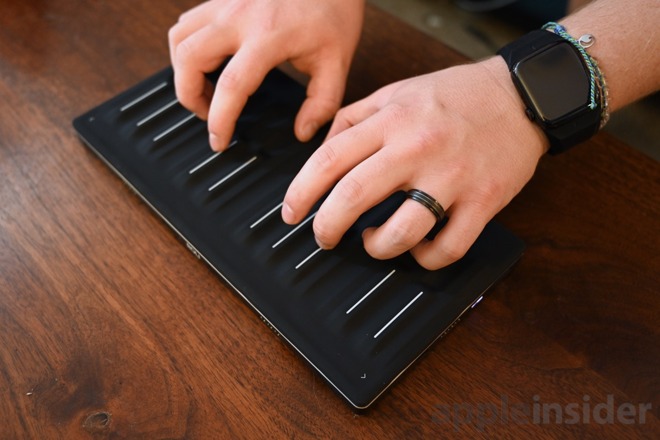
Roli Seaboard Block
These surfaces incorporate Roli's 5D-touch pressure sensitivity system for 24 wonderfully responsive keys. Roli monitors strike, lift, slide, glide, and press when playing on the keyboard. If you want to get a sense of this yourself, check out the free Seaboard 5D app.
Both the enharmonic and the natural keys are black, though those sharps and flats have a white line denoted on them. Truthfully, while playing, we wish there was a little more distinction between the two sets of keys.
Two touch-sensitive arrow buttons sit in the respective top corners for cycling through the octaves of the keyboard. On the underside, a band of rubber keeps the keyboard in place while playing. In the center of that is a pair of physical buttons to enable Bluetooth and turn on the power.
There are loads of other customizations that can be done on the Seaboard Block, utilizing the software in the accompanying apps.
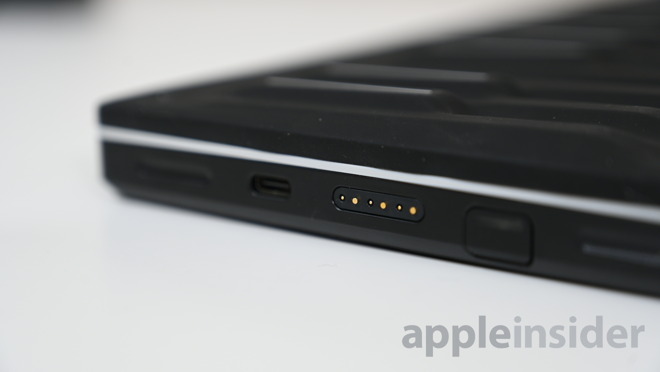
Magnetic connectors on the sides of all Roli Blocks
Thankfully, Roli embraced the modern design of the Seaboard Block and taps USB-C as the charging method for the keyboard itself.
For those familiar with playing on a keyboard, the Seaboard Block will seem familiar at first, but its various degrees of touch will certainly have you relearning how to play properly again. There's no resistance to the keys in any way, so often the slightest touch can trigger a nearby note instead of the one you intended to press.
It would have also been great if this was styled with black and white keys like a normal keyboard, just to make it visually easier to move from chord to chord, as the all-black design makes it hard to visually differentiate between keys.
There are no speakers on the keyboard itself, so any audio has to come by pairing with an iPhone or iPad over Bluetooth, but we will get to the iOS components in a bit.
Playing on the Seaboard Block is more of a different experience than we'd expected. The keys are very soft and there is some, but not a lot of movement when depressed. They are very sensitive so even the smallest bump can trigger a keystroke. As expected, a firmer press delivers a more substantial sound than a light touch.
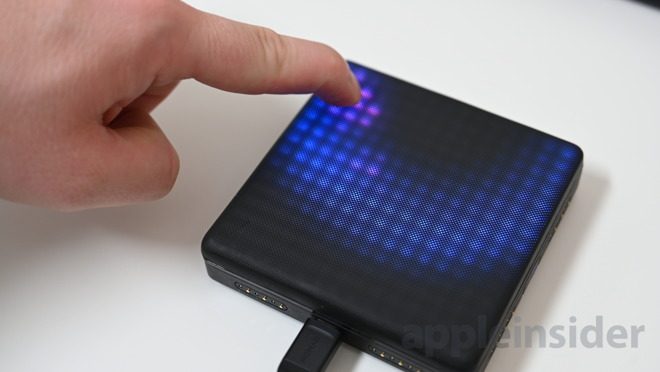
Silicone surface on the Roli Lightpad M Block
Essentially, the Lighted Block M is a fancy MIDI controller where the input is all done through the touch-sensitive surface.
It has a similar-feeling silicone top that isn't quite as "squishy" compared to the Seaboard. It also has a textured surface with 225 "microkeywaves" which make it a bit more tactile and exact as you are creating your beats.
These microkeywaves are just a ton of small dimples along the top surface, below which is a series of LEDs. These LEDs can display information, as well as split the pad into a grid, or designate different sounds. They also just look cool.
It too uses USB-C and has a power button and one to cycle through different instruments and sounds.
The 5D-touch system also comes into play much more here with the Lightpad Block than it even did with the Seaboard Block. You can strike the surface harder or softer to change the volume of the sounds and sliding the finger around allows you to bend the pitch. Very cool and fun to play around with.
We've always been more into playing music versus creating beats, but the Lightpad Block makes it easy to do and with the portable size, it is pretty enjoyable to tote around and play with on the go.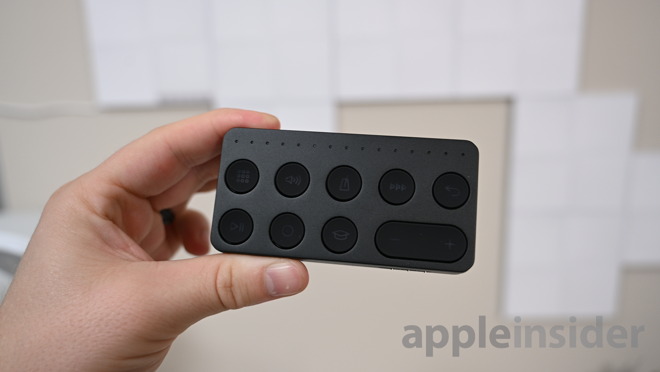
The Loopmaker Block
The third component in the Songmaker kit is the Loop Block. This controller lets you control much of what you are doing with the Seaboard and Lightpad blocks. There are nine buttons on the Loop Block for various purposes. The buttons are backlit with colorful LEDs so they are very easy to see.
You can turn on a metronome, adjust the volume, play/pause, record, etc. It's worth noting that these features can be done in the Noise app but you can't undercut the importance of physical controls from time to time. It is far easier to tap the Loop Block than it is when you're in the app in the middle of a track.
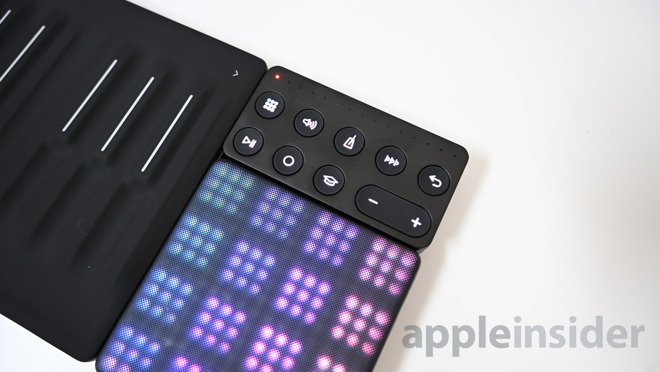
Loopmaker Block on the Lightpad M
As it doesn't function without the Lightpad Block or the Seaboard Block, there is no need for its own power so you don't have to worry about charging the Loop Block.
But how does it get power? Let's see how this comes all together.
Take the Seaboard, and snap the Lightpad M and the Loop controller to your left. Connecting a second Seaboard for a larger keyboard, stick the Lightpad M and the Loop blocks right on the front. They all connect effortlessly and it is a fantastic way to integrate all the components.
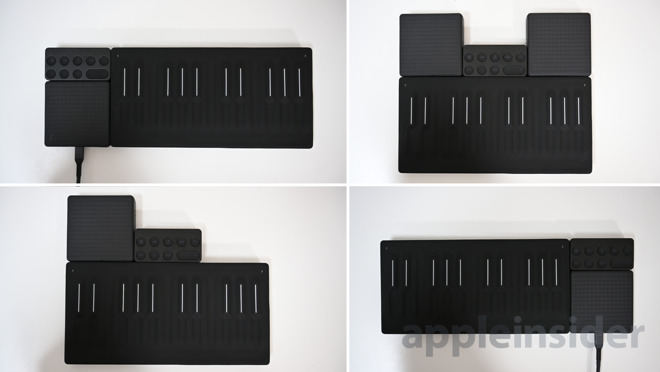
Different configurations of Roli Blocks
This way you can always tack on additional components as your needs grow. Since this is a kit, all three of these pieces can fit together in the included storage case too.
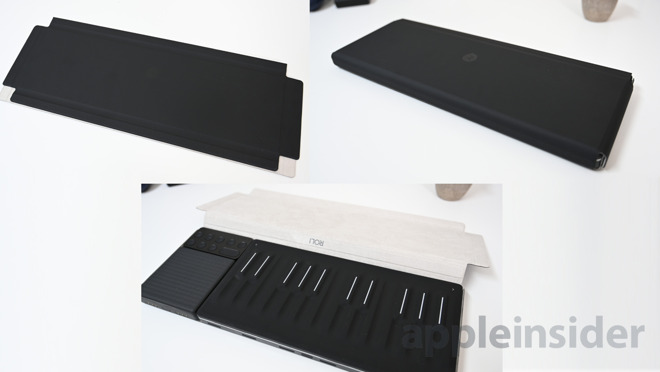
The Songmaker Kit case is magnetic and lays flat
The storage case folds completely flat and is assembled on demand by what else but magnets. Microfiber lines the interior and the outside is a nice soft-touch material that should resist oils and stains fairly well.
Roli did think of everything here.
In the Noise app, you can completely control the devices. Connected via Bluetooth, you can record straight to your device and play audio through your speakers. You can control the sound packs and even download additional ones.
If you are mixing a song, you can record loops, change instruments, and layer your tracks all together. Put down a backing track, lay down a drum beat, and lay the melody on top. It truly unlocks the abilities of the Songmaker Kit, loading up the Lightpad M with different sounds and changing the instrument coming from the Seaboard.
Roli has an expansive number of sounds available -- over 500 -- including synths, drums, flutes, orchestras, guitars, acoustic strings, brass, and more. Again -- fun to play. Some sound packs from famous artists are paid, but they are in no way required.
The Play app is a bit more simplistic, allowing you to quickly play and record right on the spot without the extra features of the Noise app. Start playing a track, go back and add another layer, etc. It is very basic but useful.
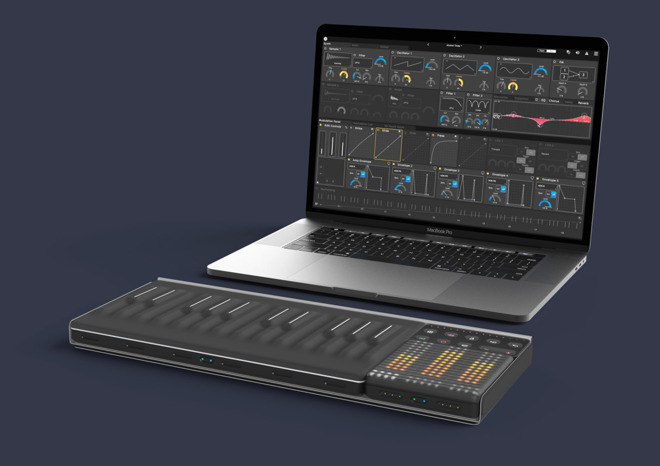
Roli Songmaker Kit works also with Mac
Even the carrying case seems thought through, even though it will quickly be too small if additional components are added on. We're even sold on the soft, silicone surfaces which, while they may take a bit to adjust to, are very enjoyable to play on.
Without any speakers, the devices are a bit useless without your iPhone or iPad which some may see as a downside. But, they connect so easily and have such ample battery we never thought twice about it.
Alongside the Songmaker Kit, Roli also has the Beatmaker Kit which includes both the Lightblock M Block and the Loop Block, perfect for crafting beats on the go.
Meanwhile, the Seaboard Block Wireless Keyboard Controller is on sale at Amazon for just under $280, with the Lightpad Block M Wireless Controller marked down to $159.96.

The Roli Songmaker Kit
You wouldn't be wrong to say that the Roli devices look futuristic. With a silicone surface, colorful LEDs, and app-integration, the whole package is about as futuristic as music gear can get.
There are several individual components in the Roli Blocks lineup, all of which can be picked up individually, or in various kits. In this case, we're testing the Songmaker Kit which includes the Lightpad Block M, Seaboard Block, and the Loop Block. You save a bit buy getting them together in the kit, plus it has a case that keeps them all together.
Let's first look at each component, then how they all work together.
The keyboard
The Seaboard block is the most approachable module of the kit. It's akin to a standard portable keyboard but with a unique design. The entirety of the top is a luxuriously soft silicone top that has a matte finish to allow easy sliding of the fingers. Rather than individual plastic keys that are doing their best to mimic that of a traditional grand piano, the Seaboard Block is one piece of silicone with the individual keys molded into it.
Roli Seaboard Block
These surfaces incorporate Roli's 5D-touch pressure sensitivity system for 24 wonderfully responsive keys. Roli monitors strike, lift, slide, glide, and press when playing on the keyboard. If you want to get a sense of this yourself, check out the free Seaboard 5D app.
Both the enharmonic and the natural keys are black, though those sharps and flats have a white line denoted on them. Truthfully, while playing, we wish there was a little more distinction between the two sets of keys.
Two touch-sensitive arrow buttons sit in the respective top corners for cycling through the octaves of the keyboard. On the underside, a band of rubber keeps the keyboard in place while playing. In the center of that is a pair of physical buttons to enable Bluetooth and turn on the power.
There are loads of other customizations that can be done on the Seaboard Block, utilizing the software in the accompanying apps.

Magnetic connectors on the sides of all Roli Blocks
Thankfully, Roli embraced the modern design of the Seaboard Block and taps USB-C as the charging method for the keyboard itself.
For those familiar with playing on a keyboard, the Seaboard Block will seem familiar at first, but its various degrees of touch will certainly have you relearning how to play properly again. There's no resistance to the keys in any way, so often the slightest touch can trigger a nearby note instead of the one you intended to press.
It would have also been great if this was styled with black and white keys like a normal keyboard, just to make it visually easier to move from chord to chord, as the all-black design makes it hard to visually differentiate between keys.
There are no speakers on the keyboard itself, so any audio has to come by pairing with an iPhone or iPad over Bluetooth, but we will get to the iOS components in a bit.
Playing on the Seaboard Block is more of a different experience than we'd expected. The keys are very soft and there is some, but not a lot of movement when depressed. They are very sensitive so even the smallest bump can trigger a keystroke. As expected, a firmer press delivers a more substantial sound than a light touch.
The beat-center
Next in the songmaker kit is the Lightpad Block M. This is the beat-center of the entire kit. The Seaboard Block is the keyboard and the Lightpad Block lets you tap to create a custom beat, drums, or other effects for your song.
Silicone surface on the Roli Lightpad M Block
Essentially, the Lighted Block M is a fancy MIDI controller where the input is all done through the touch-sensitive surface.
It has a similar-feeling silicone top that isn't quite as "squishy" compared to the Seaboard. It also has a textured surface with 225 "microkeywaves" which make it a bit more tactile and exact as you are creating your beats.
These microkeywaves are just a ton of small dimples along the top surface, below which is a series of LEDs. These LEDs can display information, as well as split the pad into a grid, or designate different sounds. They also just look cool.
It too uses USB-C and has a power button and one to cycle through different instruments and sounds.
The 5D-touch system also comes into play much more here with the Lightpad Block than it even did with the Seaboard Block. You can strike the surface harder or softer to change the volume of the sounds and sliding the finger around allows you to bend the pitch. Very cool and fun to play around with.
We've always been more into playing music versus creating beats, but the Lightpad Block makes it easy to do and with the portable size, it is pretty enjoyable to tote around and play with on the go.
The brains

The Loopmaker Block
The third component in the Songmaker kit is the Loop Block. This controller lets you control much of what you are doing with the Seaboard and Lightpad blocks. There are nine buttons on the Loop Block for various purposes. The buttons are backlit with colorful LEDs so they are very easy to see.
You can turn on a metronome, adjust the volume, play/pause, record, etc. It's worth noting that these features can be done in the Noise app but you can't undercut the importance of physical controls from time to time. It is far easier to tap the Loop Block than it is when you're in the app in the middle of a track.

Loopmaker Block on the Lightpad M
As it doesn't function without the Lightpad Block or the Seaboard Block, there is no need for its own power so you don't have to worry about charging the Loop Block.
But how does it get power? Let's see how this comes all together.
Bringing it all together
One of the single most amazing aspects of the Roli Blocks is the way they all work together. Each side of all the blocks as a series of pins and magnets.Take the Seaboard, and snap the Lightpad M and the Loop controller to your left. Connecting a second Seaboard for a larger keyboard, stick the Lightpad M and the Loop blocks right on the front. They all connect effortlessly and it is a fantastic way to integrate all the components.

Different configurations of Roli Blocks
This way you can always tack on additional components as your needs grow. Since this is a kit, all three of these pieces can fit together in the included storage case too.

The Songmaker Kit case is magnetic and lays flat
The storage case folds completely flat and is assembled on demand by what else but magnets. Microfiber lines the interior and the outside is a nice soft-touch material that should resist oils and stains fairly well.
Roli did think of everything here.
A well designed-iOS experience
The keyboard and beat controller are both MIDI devices that can be connected to your Mac and used with Logic or GarageBand, but here we want to focus on the Noise app and Play app which are available for both iPhone and iPad.In the Noise app, you can completely control the devices. Connected via Bluetooth, you can record straight to your device and play audio through your speakers. You can control the sound packs and even download additional ones.
If you are mixing a song, you can record loops, change instruments, and layer your tracks all together. Put down a backing track, lay down a drum beat, and lay the melody on top. It truly unlocks the abilities of the Songmaker Kit, loading up the Lightpad M with different sounds and changing the instrument coming from the Seaboard.
Roli has an expansive number of sounds available -- over 500 -- including synths, drums, flutes, orchestras, guitars, acoustic strings, brass, and more. Again -- fun to play. Some sound packs from famous artists are paid, but they are in no way required.
The Play app is a bit more simplistic, allowing you to quickly play and record right on the spot without the extra features of the Noise app. Start playing a track, go back and add another layer, etc. It is very basic but useful.
Play on
We love nearly everything about the Roli Blocks setup, especially the Songmaker Kit. The way all the accessories can communicate and connect magnetically is brilliant and well-executed and the depth of the iOS apps is appreciated.
Roli Songmaker Kit works also with Mac
Even the carrying case seems thought through, even though it will quickly be too small if additional components are added on. We're even sold on the soft, silicone surfaces which, while they may take a bit to adjust to, are very enjoyable to play on.
Without any speakers, the devices are a bit useless without your iPhone or iPad which some may see as a downside. But, they connect so easily and have such ample battery we never thought twice about it.
Alongside the Songmaker Kit, Roli also has the Beatmaker Kit which includes both the Lightblock M Block and the Loop Block, perfect for crafting beats on the go.
Rating: 4.5 out of 5
Pros- Highly portable
- Great iOS integration
- High resolution sound
- Integrated stand
- Cool and fun
- Takes time to adjust
- Expensive for a full kit
Where to buy
The Roli Songmaker Kit is available now at B&H Photo for $519 with free expedited shipping.Meanwhile, the Seaboard Block Wireless Keyboard Controller is on sale at Amazon for just under $280, with the Lightpad Block M Wireless Controller marked down to $159.96.

Comments
Roli with Logic integration would be amazing.
Professionals are almost all exclusively Mac and Pro Tools/Logic.
More reason for Apple to acquire Roli.
A Pro studio will always trump a mobile rig.